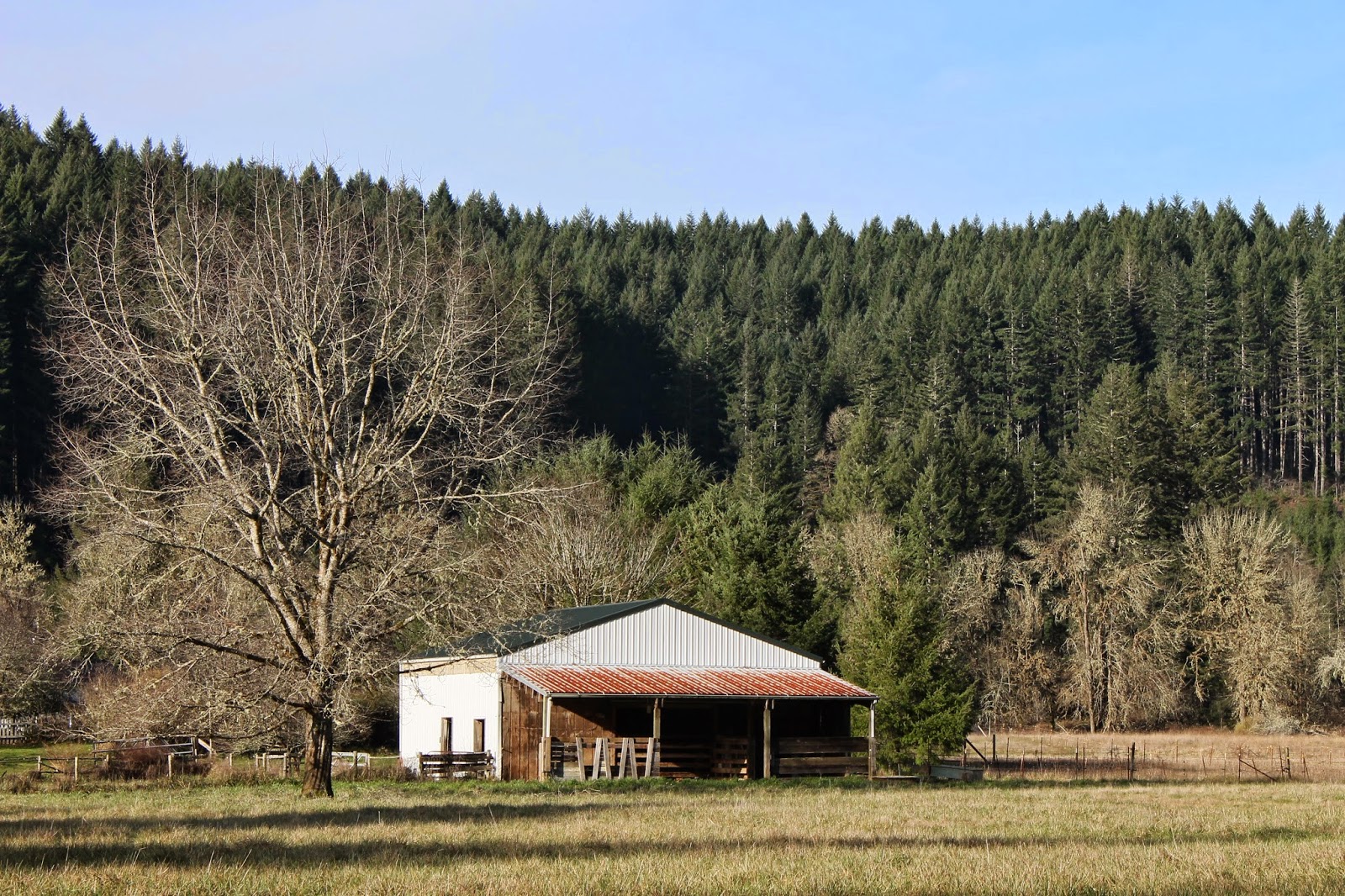When it comes to telephoto lenses, landscapes were hardly mentioned, if at all. That has changed in recent years. Today, long lenses are not only adequate for landscape photography, they are spectacular.
Photo 1
I own Canon gear. The 7D paired with the EF 70-300mm is mostly what this article will showcase, but lenses like the 70-200, 100-400, and Tamron's 150-600mm are also the focus of this article.
Landscapes such as rural farm-fields and mountain passes, often provide gorgeous scenes to photograph, and are frequently accessible by car. In the barn scene above, I shot from the road, twenty feet from where I parked.
Urban settings, such as a falling sun above a city skyline, are perfect for the long zoom lens. Even at 300mm, shots that invoke a big perspective, are numerous. In the same breath, a forest mountainside shrouded in fog, can solicit responses normally reserved for wide-angle lenses.
Photo 2
Landscape photography has historically shown us huge scenes, with massive foregrounds and towering backgrounds. To be fair, the long end of telephoto lenses are at a disadvantage in this regard. But my 70-300mm is not useless at 300mm, in fact, it is quite capable.
Settings that offer contrast and tension, and a sense of dramatic fury, are best photographed at 200mm and 300mm, if you are shooting the long telephoto. Traditional wide-angle use is good, no doubt, but in the scene above(Photo 2), the long angle works better, and captures the setting precisely. We see the fog burning off, swallowed up by a sun-drenched conifer forest, one that is recovering from logging. The photo leads us to believe that the sun was not shining bright here an hour ago. The scene was gray-green, shrouded in fog. Bland and almost colorless is becoming sunshine before our eyes.
Of course, nature provides us with large, expansive scenes, rich with color and detail, and spread out in a panorama view, as we stand on mountains. In those moments, a wide-angle lens is most useful. The fertile Willamette Valley where I live, offers farmlands full of wide landscapes, picturesque flower fields, and still-life photography that cannot be beat. Having the wider lenses is ultimately useful here.
Photo 3
The above photo of the Alsea Valley in the Oregon Coastal Mountains, was shot at 27mm with Canon's standard consumer kit lens, the EFS 18-55mm. The picture illustrates the scenery at wider angles, but also shows us that photos exist within this photo. Zooming in here to 200 or 300mm might add some drama to a photo by establishing a defined subject. An example is the aspen trees and the homestead. The presence of logging in the hills so starkly placed, may create a more expository setting. Descriptive photos tell a story, and as photographers, we should try and remember that.
Photo 4
Understanding our lenses is crucial to finding settings for the camera to capture. Flowers and plants, for example, can be perfect subjects for a zoom lens to shoot a landscape. Even at 70mm on my 70-300, landscapes are vivid and large. The scenes are typical photography. Meaning, photos are perspectives of the world around us, and capturing those moments means using whatever lens you might have on the camera at that time.
70mm on a Canon 7D.









No comments:
Post a Comment